#Pilots Licence Australia
Explore tagged Tumblr posts
Text
Environmental Sustainability in Aviation: Initiatives and Education in Australia
In an era where environmental consciousness is paramount, the aviation industry faces increasing pressure to minimize its ecological footprint. Aspiring pilots looking to study aviation in Australia are not only seeking top-notch education but are also increasingly interested in programs that prioritize environmental sustainability. Flying School in Australia has recognized this shift in priorities and is actively integrating eco-friendly initiatives into its curriculum.
Study Aviation in Australia: Fostering Environmental Awareness
Flying School in Australia stands out for its commitment to environmental sustainability within the aviation sector. The curriculum not only focuses on developing proficient pilots but also instills a deep understanding of environmental challenges and the role of aviation in addressing them. From the very beginning, students are exposed to the importance of reducing carbon emissions, conserving resources, and adopting eco-friendly practices.
Initiatives for Environmental Sustainability
One of the key initiatives implemented by Flying School in Australia is the integration of sustainable aviation practices into flight training. This includes promoting fuel-efficient flying techniques, optimizing flight routes to minimize emissions, and utilizing advanced aircraft with lower carbon footprints. Additionally, the school emphasizes the importance of regular maintenance to ensure aircraft operate at peak efficiency, thereby reducing fuel consumption and emissions.
Flying School in Australia also actively participates in research and development projects aimed at advancing eco-friendly aviation technologies. By collaborating with industry partners and academic institutions, the school contributes to the development of electric and hybrid propulsion systems, biofuels, and lightweight materials that reduce aircraft weight and fuel consumption.
Education on Environmental Sustainability
Education is a powerful tool in promoting environmental sustainability, and Flying School in Australia incorporates this principle into its curriculum. Students are introduced to concepts such as carbon offsetting, renewable energy, and sustainable aviation policies. Through lectures, seminars, and practical training sessions, aspiring pilots gain a comprehensive understanding of the environmental impact of aviation and the strategies to mitigate it.
Furthermore, Flying School in Australia encourages students to actively engage with environmental organizations and initiatives. Whether through volunteer work, internships, or research projects, students have the opportunity to contribute their skills and knowledge towards environmental conservation efforts. By fostering a sense of responsibility and stewardship, the school prepares future aviation professionals to be champions of sustainability in their careers.
Conclusion
As the aviation industry continues to evolve, environmental sustainability must remain a top priority. Flying School in Australia recognizes the importance of this issue and is committed to preparing the next generation of pilots to navigate the skies responsibly. By integrating eco-friendly initiatives into its curriculum and fostering environmental awareness among students, the school is shaping a future where aviation and sustainability go hand in hand. For those looking to study aviation in Australia, Flying School offers not only top-notch education but also the opportunity to make a positive impact on the planet.
0 notes
Text
Pilot Training Australia
Flight training Australia schools are approved to conduct both the theory and practical flight training however when it comes to flight testing, theory exams and license issue, this is all done by CASA. Therefore whilst its important to choose the right flight school, its also important to remember that you are training for a CASA licence not just a licence issued by your school.
0 notes
Text
Tentative Truce [RP]
With @dazednde-fused:
Hearing his real name uttered by The Voice Who Answers gave him a strange flutter in his belly. It felt strange, but also made him oddly joyful. The happy feeling quickly gave way to worry. Thunderbird Two grounded? Wait, the machine or the pilot? John said repairs, so that meant just the machine, right? Not that that was a good thing. Concentrate on the job at hand. Moving rubble. With explosives. Okay, that could be done. No cave-ins though. Tricky. He'd need to be careful - not something that had been a priority with his last employer. "Uh, okay. Yeah." He swallowed hard. He could do this. For the briefest of moments, he'd entertained the idea that John meant Thunderbird One was coming here to take him out to Australia to give hands on help. Then he realised the GDF wouldn't allow that, so John must have meant help-via-holocall. "So, you want me to give Scott . . . er, Thunderbird One advice on types and quantities of explosives and precise placement and stuff, right? I can do that, but I'll need as much information as you can give me on the terrain and the type of rock and soil involved." Doing this remotely wouldn't be ideal, and the potential for getting something wrong was higher than he'd like. What if something went wrong and people got hurt? He'd never be able to prove to IR and the Tracys that he'd changed then.
The look of relief that slips through Thunderbird Five's mask of professionalism suggests that the situation may be far more dire than John had been letting on.
"We appreciate your cooperation." He says, and it sounds surprisingly sincere for so robotic a statement, "The GDF has granted us a special permissions licence, for this rescue only, to have you on-site. I'm afraid we'll have to tolerate a security detail, but International Rescue isn't about to complain about having more hands for a job." There's a quick flash of white teeth that might even count as a smile.
"I trust I don't need to get Colonel Casey in here to remind you to toe the line?" John adds, watching as the other man is flanked by uniformed GDF officials, ready to be escorted out to the waiting helijet. "I'll transfer the schematics I have of the site over to your handlers now."
Even with the guard, the Space Monitor has no intention of leaving Fuze's commline for even a moment. He's taking a big risk here, gambling like this, but he hopes that the fact that - should he try anything, should he go rouge - his GDF entourage will make sure he never sees the light of day again, will be enough to keep his brother and the rescuees safe.
Clarence expressed a desire to change... and John is hedging a lot of bets on that being true.
#TentativeTruceRP#Putting this in a thread post bc John's blog goes loopy reblogging asks bc the HTML for it is so ollddddd#Hope thats ok! <3#also#dont u worry#there is no possible way to stuff up#you could write anything and i will love it#im just happy to be here XDD#//sends love your way//#... i wonder if i should re-do his blog theme#feedback says its awful to try and read white on black but i find it easier so ?????????#any not mobile users got thoughts on that?#also no one ask me how long it too for me to spell entourage
25 notes
·
View notes
Text

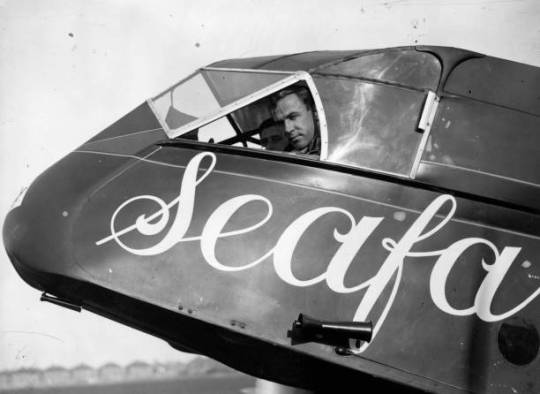

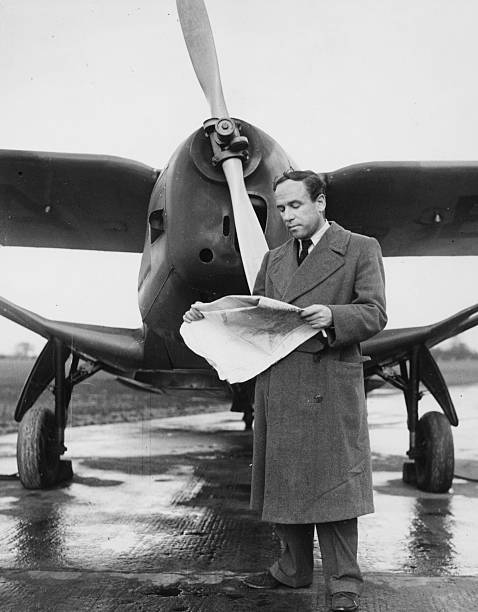

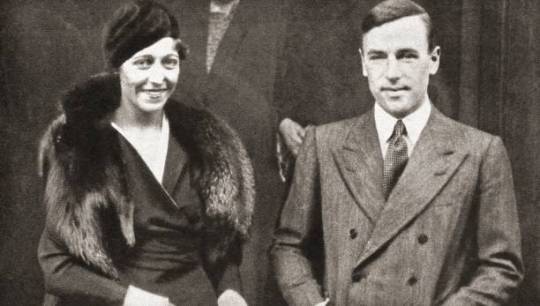
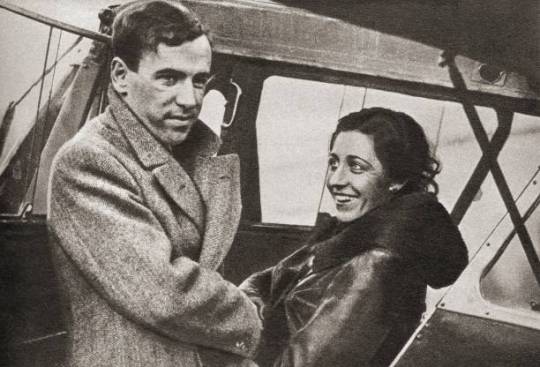


James Allan Mollison was born on April 19th 1905 in Glasgow.
Graeme Obree, Chris Hoy and a certain steam train have all bee called The Flying Scotsman in their time, but the original title goes to a man who actually did fly, Jim Mollison.
Jim would go on to become a pioneering aviator, breaking records for long distance flights. His marriage to fellow aviator Amy Johnson also saw them lauded as the golden couple during their time together.
Born the only child of Hector Alexander Mollison, a consultant engineer, and Thomasina Macnee Addie. He was educated at The Glasgow Academy and Edinburgh Academy and took an early interest in flying and obtaining his Royal Air Force (RAF) Short Service Commission at 18, he was the youngest officer in the service, and upon completion of training was posted to India, flying on active service in Waziristan.
At the age of 22, Mollison became a flying instructor at Central Flying School (CFS), again setting the record for being the youngest in this role. Shortly after, he transferred to the RAF Reserve and devoted his time to civil aviation. In 1928-29, he served as an instructor with the South Australian Aero Club in Adelaide, leaving that position to become a pilot with Eyre Peninsular Airways and Australian National Airways.
In July-August 1931, Mollison set a record time of eight days, 19 hours for a flight from Australia to England, and in March 1932, a record for flying from England to South Africa in 4 days, 17 hours flying a de Havilland Puss Moth.
Mollison eventually served in the ATA Air Transport Auxiliary in the Second World War. In June 1941 Mollison and an ATA crew delivered Cunliffe-Owen OA-1 G-AFMB to Fort Lamy, Chad. The aircraft was fitted out as a personal transport for General De Gaulle.
Mollison was feted in London and New York, and could lead the life he had always wanted. “I am a night bird,” he once said. “Life and enjoyment begin when daylight fades. Cocktail bars and clubs, music, beautiful women— that’s living. Daylight comes to me as an interval for sleeping until an afternoon drink helps to bring on another evening.” His autobiography was called “Playboy of the Air”.
When Mollison and Amy Jonson married in 1932 the press were delighted, they were dubbed The Flying Sweethearts by the press and public. . The match was was perfect for the publicity machine, and the two of them set about devising new aviation records: in 1933 they flew together from Wales to New York and had a ticker-tape reception in Wall Street. But marriage did not last long or end well. It has sometimes been assumed that the match was a simple career move on Mollison's part: certainly he did not halt his relationships with other women. Nor did it limit his drinking. As I said earlier, he got the tag “ the Flying Scotsman” but those close to him called him “Brandy Jim”.
As well as his Playboy lifestyle and heavy drinking Jim Mollison was also quick with his fists, and a manager from the Grosvenor House Hotel was reported as saying ” We've had the most awful night here. Jim Mollison and Amy Johnson had a fearful row and he's beaten her up. The bathroom looks like a slaughterhouse.” The marriage officially ended in 1938.
Mollison kept flying, and – like Johnson – flew in a non-combat role in WWII. Both of them flew in the Air Transport Auxiliary. Johnson died in 1941 after baling out of aircraft. Mollison had at least one close escape, when his plane was shot up, but survived the war.
Mollison later settled in London and ran a public house. He married Maria Clasina E. Kamphuis in 1949 at the Maidenhead Register Office. Mollison continued to abused alcohol and in 1953, the Civil Aviation Authority Medical Board revoked his pilot's licence. The couple separated but Maria bought the Carisbrooke Hotel in Surbiton for him – a temperance hotel.
Suffering from acute alcoholism, he was admitted to The Priory, Roehampton, southwest London, where he died on 30 October 1959, the official cause of death was pneumonia, but unofficially it was thought to be alcoholic epilepsy.
The pics a pretty self explanatory, the colour one is titled Sweethearts and is from Italian paper Il Mattino Illustrato and shows Mollison kissing his wife of 6 weeks goodbye before he set off in 1932 to become the first pilot to fly solo east-to-west across the Atlantic from Ireland to Canada.
14 notes
·
View notes
Text
Australia's Liberal Party has for the first time chosen a woman as its leader, with Sussan Ley to take over from Peter Dutton after he led the party to a bruising election loss.
Ley, from the moderate faction of the party, beat Angus Taylor - who ran on a promise to restore conservative values - by four votes.
At the election on 3 May, the Liberal-National coalition, currently Australia's main opposition party, suffered what many are calling the worst defeat in its history.
Pundits and MPs have blamed the result on polarising leaders, a messy campaign and "Trumpian" policies, which alienated women and young people in particular.
Ley's appointment comes as Prime Minister Anthony Albanese was sworn in at Government House on Tuesday, following his Labor Party's landslide election win.
According to the Australian Broadcasting Corporation, Labor has won at least 93 seats - increasing their majority by 16 - while the Coalition has 41 electorates, down from 58. Some seats are still too close to call.
Ley has held the massive regional New South Wales seat of Farrer since 2001 and has served as a senior minister in a variety of portfolios - making her one of the Liberal Party's most experienced hands. She was also the party deputy under Dutton.
Ted O'Brien, a Queensland MP who was the energy spokesman in charge of selling the coalition's controversial nuclear power proposal, was elected Ley's deputy.
Both are expected to address the media later on Tuesday, but Ley has previously said she wanted to help the party rebuild its relationship with Australians.
"Many Australians, including women and younger Australians, feel neglected by the Liberal Party," she said when announcing her desire to lead.
"We need to listen and we need to change. The Liberal Party must respect modern Australia, reflect modern Australia and represent modern Australia."
Speaking after the party room vote, former minister Linda Reynolds said: "Australia spoke very clearly to the Liberal Party and we've listened and we've acted."
The junior coalition partner, the Nationals, re-elected leader David Littleproud on Monday, after he too was challenged by a hardlineconservative colleague.
Albanese's new cabinet was also sworn in on Tuesday.
The biggest changes include former Labor deputy Tanya Plibersek swapping from the environment portfolio to social services, and former communications minister Michelle Rowland becoming attorney general.
Former Attorney General Mark Dreyfus and Ed Husic - the first Muslim to become an Australian government minister - were both removed from the frontbench.
"I have got people who are, I think, in the best positions and that's across the board," Albanese said when announcing the positions on Monday.
A 'wonderfully varied' path to politics
Born in Nigeria to English parents, Ley grew up in the United Arab Emirates before moving to Australia at age 13.
"Travelling, and being at boarding school on my own, I think you either sink or swim," Ley said in a previous interview. "Obviously, I was someone who decided very early on in life that I wasn't going to sink."
It was as a young woman that she changed her name from Susan to Sussan, inspired by numerology - an ancient belief that numbers have a mystical impact on people's lives.
"I read about this numerology theory that if you add the numbers that match the letters in your name you can change your personality," she told The Australian.
"I worked out that if you added an 's' I would have an incredibly exciting, interesting life and nothing would ever be boring. It's that simple."
"And once I'd added the 's' it was really hard to take it away."
As an adult she has had a "wonderfully varied" career path, Ley says, obtaining degrees in economics and accounting while raising three young children, earning a commercial pilot licence, and working in the outback mustering livestock.
Elected in 2001 to represent an area the size of New Zealand, Ley was promoted to Health Minister under Malcom Turnbull in 2014, but resigned two years later amid an expenses scandal.
Ley apologised after using a taxpayer-funded trip to purchase an apartment on Queensland's Gold Coast.
She re-joined the frontbench in 2019 after Scott Morrison's "miracle" election win, as the Minister for Environment.
In that role, she was taken to court by a group who claimed she had a duty of care towards children to protect them from harm caused by climate change. Eight teenagers and an 87-year-old nun convinced a court that the government had a legal duty towards them when assessing fossil fuel projects, but the landmark decision was later overturned.
Ley has also drawn headlines for her comments about Palestinians. She was a co-chair of the Parliamentary Friends of Palestine, an informal cross-party group which aimed to raise the experiences of Palestinian people and has spoken in the chamber in support of Palestinian autonomy.
However, speaking after the vote on Tuesday, one of her colleagues Andrew Wallace said she has "seen the light on Israel in recent years".
3 notes
·
View notes
Text
Can International Students Study Aviation Courses in Australia?

Absolutely! International students are welcome to study aviation courses in Australia. With its renowned aviation industry and world-class training facilities, "Learn To Fly" is a popular destination for aviation education. Whether you're interested in pursuing a Private Pilot Licence (PPL), Commercial Pilot Licence (CPL), or even a Bachelor of Aviation degree, we offer a wide range of courses to suit your goals.
Join our supportive learning community, unlock your full potential, and soar to new heights with our aviation courses and flight training in Australia.
#aviationcoursesaustralia#aviationschoolsinaustralia#flighttrainingaustralia#bachelorofaviationaustralia#learntoflyhongkong
2 notes
·
View notes
Text

Your Path to the Skies Starts Here | Learn To Fly Melbourne
Dreaming of the skies? ✈️ Discover how to become a commercial pilot with expert pilot training at Learn To Fly Melbourne. Learn how to become a pilot in Australia, from commercial pilot training to instrument flight training. Enrol in a pilot course in Australia, diploma of aviation, or ace your cadet pilot interview. We also offer aerobatics training, icao licence, and airline pilot interview preparation!
0 notes
Text
🚀 Impact Minerals Releases Interim Financial Report – Progress Accelerates at Lake Hope HPA Project with $2.87M Grant & Exploration Upside 💼⚒️
Impact Minerals Ltd (ASX: IPT) has released its Interim Financial Report, highlighting continued progress across its critical minerals portfolio—headlined by key milestones at the Lake Hope High Purity Alumina (HPA) Project in Western Australia, alongside ongoing exploration for nickel, copper, gold and PGM across priority tenements.
💸 Key Highlights from the Interim Report:
✅ Strong progress towards earning an 80% interest in Lake Hope HPA Project ✅ Maiden Measured Resource: 730,000t @ 25.8% Al₂O₃ – supports an initial 15-year mine life ✅ $2.87 million Federal Government Grant secured for pilot plant development (with CPC Engineering & Edith Cowan University) ✅ Mining Lease and Miscellaneous Licence applications lodged ✅ Kwinana selected for 10,000tpa HPA Process Plant – strategic location with capex/opex efficiencies ✅ Low-Temperature Leach process confirmed as preferred pathway for scalable HPA production
📌 Strategic and Operational Updates:
✅ Land Access & Cultural Heritage agreement signed with Ngadju people ✅ Testwork progressing on HPA and by-products, with marketing and offtake discussions underway ✅ New Marketing Manager appointed to lead customer and industry engagement ✅ Experimental hydrated alumina product showing potential in flame retardants and catalysts
🧭 Exploration Projects:
Arkun Nickel-Copper-PGM Project (WA) → Expanded soil sampling & drill targeting at Caligula and Beau prospects → $180,000 WA Government EIS co-funding secured → Drilling planned for Q1/Q2 2025
Commonwealth Base Metals Project (NSW) → Burrendong Minerals IPO launched; IPT shareholders entitled to $2 million in priority allocation
📊 Financial Snapshot:
→ Net assets: $12.54 million (as at 31 Dec 2024) → Cash and equivalents: $1.2 million
🌍 Investor Outlook:
Impact’s interim results reflect prudent cost management, strong government support, and ongoing technical advancements at Lake Hope—reinforcing the Company’s strategy to become a key supplier of High Purity Alumina, while leveraging exploration upside in battery and critical metals. Upcoming catalysts including reserve definition, pilot plant development and drilling programs offer potential for significant value uplift.
Current Share Price: $0.0070 (ASX: IPT)
🔗 Read the full Interim Financial Report: https://impactminerals.com.au/announcements/6861327
⚠️ This is not investment advice. Please do your own research before making any investment decisions.
#ImpactMinerals#ASXIPT#InterimFinancialReport#HighPurityAlumina#CriticalMinerals#BatteryMaterials#NickelExploration#CopperExploration#PGM#GreenTechnology#CleanEnergy#Kwinana#WAResources#SustainableInvesting#RareEarthElements#ASXUpdate#MiningNews#InvestorUpdate#FederalGrant#MineralExploration#SmallCapASX
0 notes
Text
How to Choose the Right Flight School for Your Pilot Training in Australia
If you've ever dreamt of soaring through the skies as a licensed pilot in Australia, you're not alone. Pursuing a pilot license in Australia is a thrilling endeavor that opens up a world of opportunities, from commercial flying to private aviation. However, choosing the right flight school is a crucial first step towards achieving your dream of becoming a pilot. In this article, we'll explore the factors to consider when selecting the ideal flight school for your pilot training in Australia.
Accreditation and Certification: The first and most crucial factor to consider is whether the flight school is accredited by the relevant aviation authorities in Australia. Look for schools that are approved by the Civil Aviation Safety Authority (CASA). Accreditation ensures that the school meets the highest safety and training standards.
Instructor Qualifications: Your flight instructors play a vital role in your training. Ensure that the flight school employs experienced and certified instructors who are passionate about teaching and have a track record of producing successful pilots.
Aircraft Fleet: A diverse and well-maintained fleet of aircraft is essential for comprehensive pilot training. Check if the school offers a range of aircraft types, from single-engine to multi-engine, to cater to your specific training needs.
Facilities and Infrastructure: Visit the flight school and assess their facilities. A modern and well-equipped training environment contributes to a more effective learning experience.
Safety Record: Research the school's safety record and history of incidents. A strong safety culture is paramount in aviation, so choose a school with an impeccable safety record.
Cost: While cost is an important consideration, don't make it your sole deciding factor. Quality training is an investment in your future. Compare the costs of different flight schools, but prioritize those that offer a balanced blend of quality training and affordability.
Location: Consider the location of the flight school. It should be convenient for you to access and offer training in an environment with diverse weather conditions and airspace.
Student-to-Instructor Ratio: Smaller class sizes and a low student-to-instructor ratio often lead to more personalized and effective training.
Reviews and Recommendations: Read reviews and seek recommendations from current and former students. Their experiences can provide valuable insights into the school's strengths and weaknesses.
Career Opportunities: If your goal is to pursue a career in aviation, inquire about the school's track record in helping graduates secure employment as pilots.
In Australia, obtaining a pilot license is a regulated process, and the journey can be both challenging and rewarding. By carefully considering these factors, you can choose a flight school that aligns with your goals and sets you on the path to obtaining your Pilot License in Australia.
In conclusion, selecting the right flight school is a pivotal decision in your journey to becoming a pilot. By focusing on accreditation, instructor qualifications, facilities, safety, cost, location, student-to-instructor ratio, reviews, and career opportunities, you can make an informed choice that will shape your aviation career positively. Start your adventure in the skies by choosing a flight school that best suits your aspirations and needs.
For more information about Pilot Training Australia and visit here: Flight School Australia
0 notes
Text
AMY JOHNSON
AMY JOHNSON
1 July 1903 – c. 5 January 1941
ENGLISH PILOT, DISAPPEARED AGED 37
Amy Johnson was an English aviator. She had trained to become a qualified ground engineer serving planes, and became qualified as a pilot in 1923.
Johnson was born in Hull, East Riding of Yorkshire, England, into a family of fish merchants. She went to University to study economics and worked in London as a secretary. She was never fulfilled with secretary work and yearned for more. She was working for a solicitor who flew as a hobby, she took a flight in 1926 and fell in love with flying and became one of the first women to gain a licence.
Johnson became a celebrity due to her flying achievements. In her Gipsy Moth aircraft ‘Jason’ she flew solo from England to Australia in 1930. In 1931 she flew to Japan and back and din 1932 she made a record solo flight to Cape Town and back. With her husband, she made a record flight in 1933 across the Atlantic Ocean in 39 hours. In 1934, they flew to India in 22 hours and in 1936 she made a new solo record for flying from London to Cape Town.
She was married to pilot James Mollison; the marriage was troubled due to his affairs with numerous women and drinking. The couple divorced in 1938.
During World War II, Johnson worked for the Air Transport Auxiliary which delivered aircrafts to those when needed. Johnson flew aircrafts from factories to RAF bases.
Johnson most likely died when her plane disappeared in 1941. It is believed that her plane crashed over the Thames Estuary during World War II. Her body was never recovered and it was presumed she had drowned. Johnson once said, “I’ll fly till I die… and I hope I die flying.”
Katharine Hepburn’s character in Christopher Strong (1933) was inspired by Johnson.
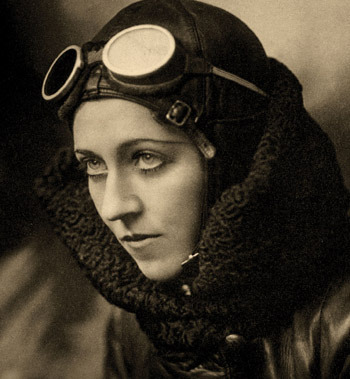
#amyjohnson
0 notes
Text
Buy PORTUGUESE ID CARD Online
Buy PORTUGUESE ID CARD Online
This process typically takes three to five days, if there are no strikes, public holidays, bureaucratic problems arising from the name discrepancy between the passport and the birth certificate, government printer outages, or logistical problems.Without a central biometric database, biometric authentication is possible with the match on card approach. Portugal severely prohibits this.Because biometric credentials are stored on a smart card, they are always protected.The card's processor does the verification and indicates whether the fingerprint that was submitted matched the one that was stored on the card.
A STRONG PARTNERSHIP It was an additional chance to build upon their special knowledge gained from the electronic passport project.You must go to a government agency in order to issue both. The first two books—one to apply for and the other to pick up the Portuguese ID card or citizen card—will be required.Based on identity, authentication, and signature requirements, the Portuguese government chose the first secure identification document in Europe. fake driver s license
BEYOND THE CITIZEN CARD
Portugal offers an intriguing example of a modern state.Its objective was to establish Portugal as a leader in the provision of high-quality services to both citizens and businesses, and to change the public sector into an inclusive, cooperative organization.Seldom have the objectives of a society that is more focused on its citizens been proclaimed from the beginning with such vigor and thorough comprehension of the problems. 15 YEARS AGO: MODERNIZATION OF STATE AND PORTUGALFew citizens were making the effort to use the internet or online services, despite the internet having made enormous advances with the nation's elite. The process is not user-friendly, and some applicants might want to be escorted through it to ensure that it goes quickly and without a hitch. when they don't talk It appeared that the nation would have to wait for the next generation, who would be better knowledgeable about modern communication techniques, to make the transition. PORTUGUESE ID CARD The Portuguese ID Card has a microprocessor that securely stores fingerprints, enabling biometric authentication when needed.Without a central biometric database, biometric authentication is possible with the match on card approach. Portugal severely prohibits this.Because biometric credentials are stored on a smart card, they are always protected. australian drivers lisence The card's processor does the verification and responds with a yes or no to the query: does the fingerprint that was sent match the one that is on file on the card? On February 14, 2007, the Portuguese ID Card, also called the Cartão de Cidadão, entered its initial pilot phase in the Azores. In 2008, the entire rollout got underway.2014 saw the introduction of a new national identity card for all Portuguese nationals, which replaced the outdated document on paper.The Portuguese ID Card was introduced with the intention of completely changing the way Portuguese people interact.
fake driver s license
national identity card uk
uk identity card
german passport
drivers license fake
australia driver licence
australian drivers lisence
australian driving license
uk id card
us passport
buy online passport
passport buy online
1 note
·
View note
Link
Once you decide you want to become a pilot, choosing a Flight School is the next task that you need to do. Read more.…
0 notes
Text
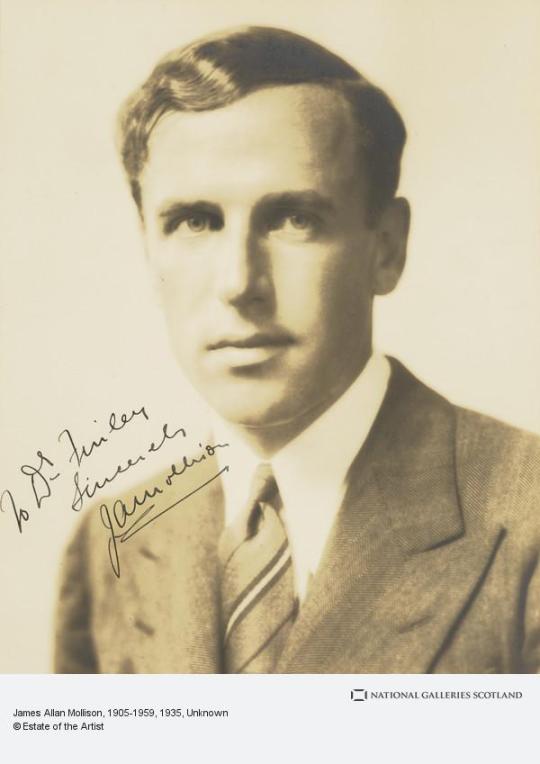
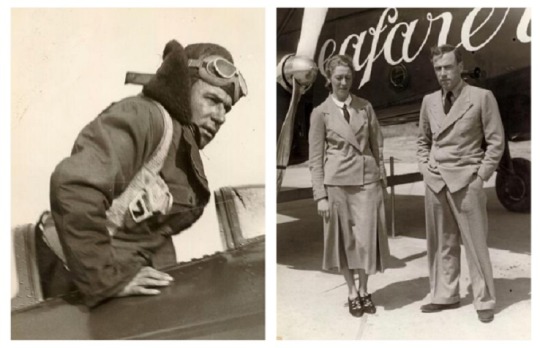
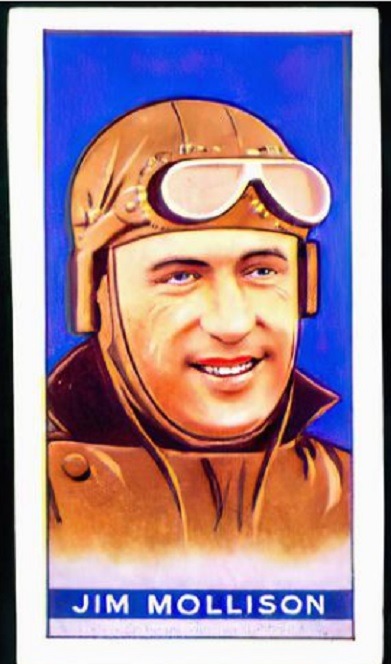
James Allan Mollison was born on April 19th 1905 in Glasgow.
Graeme Obree, Chris Hoy and a certain steam train have all bee called The Flying Scotsman in their time, but the original title goes to a man who actually did fly, Jim Mollison.
Jim would go on to become a pioneering aviator, breaking records for long distance flights. His marriage to fellow aviator Amy Johnson also saw them lauded as the golden couple during their time together.
Born the only child of Hector Alexander Mollison, a consultant engineer, and Thomasina Macnee Addie. He was educated at The Glasgow Academy and Edinburgh Academy and took an early interest in flying and obtaining his Royal Air Force (RAF) Short Service Commission at 18, he was the youngest officer in the service, and upon completion of training was posted to India, flying on active service in Waziristan.
At the age of 22, Mollison became a flying instructor at Central Flying School (CFS), again setting the record for being the youngest in this role. Shortly after, he transferred to the RAF Reserve and devoted his time to civil aviation. In 1928-29, he served as an instructor with the South Australian Aero Club in Adelaide, leaving that position to become a pilot with Eyre Peninsular Airways and Australian National Airways.
In July-August 1931, Mollison set a record time of eight days, 19 hours for a flight from Australia to England, and in March 1932, a record for flying from England to South Africa in 4 days, 17 hours flying a de Havilland Puss Moth.
Mollison eventually served in the ATA Air Transport Auxiliary in the Second World War. In June 1941 Mollison and an ATA crew delivered Cunliffe-Owen OA-1 G-AFMB to Fort Lamy, Chad. The aircraft was fitted out as a personal transport for General De Gaulle.
Mollison was feted in London and New York, and could lead the life he had always wanted. “I am a night bird,” he once said. “Life and enjoyment begin when daylight fades. Cocktail bars and clubs, music, beautiful women— that’s living. Daylight comes to me as an interval for sleeping until an afternoon drink helps to bring on another evening.” His autobiography was called “Playboy of the Air”.
When Mollison and Amy Jonson married in 1932 the press were delighted, they were dubbed The Flying Sweethearts by the press and public. . The match was was perfect for the publicity machine, and the two of them set about devising new aviation records: in 1933 they flew together from Wales to New York and had a ticker-tape reception in Wall Street. But marriage did not last long or end well. It has sometimes been assumed that the match was a simple career move on Mollison's part: certainly he did not halt his relationships with other women. Nor did it limit his drinking. As I said earlier, he got the tag “ the Flying Scotsman” but those close to him called him “Brandy Jim”.
As well as his Playboy lifestyle and heavy drinking Jim Mollison was also quick with his fists, and a manager from the Grosvenor House Hotel was reported as saying ” We've had the most awful night here. Jim Mollison and Amy Johnson had a fearful row and he's beaten her up. The bathroom looks like a slaughterhouse.” The marriage officially ended in 1938.
Mollison kept flying, and – like Johnson – flew in a non-combat role in WWII. Both of them flew in the Air Transport Auxiliary. Johnson died in 1941 after baling out of aircraft. Mollison had at least one close escape, when his plane was shot up, but survived the war.
Mollison later settled in London and ran a public house. He married Maria Clasina E. Kamphuis in 1949 at the Maidenhead Register Office. Mollison continued to abused alcohol and in 1953, the Civil Aviation Authority Medical Board revoked his pilot's licence. The couple separated but Maria bought the Carisbrooke Hotel in Surbiton for him – a temperance hotel.
Suffering from acute alcoholism, he was admitted to The Priory, Roehampton, southwest London, where he died on 30 October 1959, the official cause of death was pneumonia, but unofficially it was thought to be alcoholic epilepsy.
12 notes
·
View notes
Link
The Victorian government has announced that a trial of digital driver licences will take place in the regional city of Ballarat, following in the success of other Australian states.
From June, full licence holders in Ballarat will be able to sign up to the pilot ahead of the trial beginning in July.
A statewide rollout of the digital licences is anticipated by 2024.
#vicroads app#drivers#roads#licences#pilot scheme#Ballarat#Victoria#Australia#news#via Triple A#ABC#world news
0 notes
Text
What Is The Best Academy In Australia To Get Good Pilot Training?
As a professional pilot, you'll have a lot of decision-making opportunities throughout the course of your career. Your choice of location for your training will become one of the most crucial considerations. If you are completely new to the aviation sector, it might be challenging to make the best decision when selecting a flight school, as there are literally thousands of options available all over the world. Because of this, it is extremely difficult for you to ask the correct questions, both of yourself and regarding the school because you do not know what you do not know. But just don't worry; we're here to assist you. When selecting a flying school, the following five factors are among the most important to think about.
The instructors at your flight school will be able to assist you in determining which pilot certification level and training program will best prepare you to achieve your flying ambitions. To obtain a recreational pilot licence, for instance, you will need to complete a shorter amount of training overall than they will for a professional pilot's license certificate. However, the recreational pilot licence is only to be used for that purpose i.e Recreation – you cannot get a job and be paid to fly with this licence
A higher overall amount of training is necessary to earn a Commercial Pilot Licence, but doing so opens the door to flying larger, more capable aircraft as well as gives you an advantage when applying for elevated amounts of certification and Flight Training Australia. To be able to use a commercial pilot licence, you need to get an aviation medical certificate issued by either an approved aviation medical examiner.
Taking Into Account Your Timetable
The next essential factor that you should think about is the amount of time that you are willing to devote. Pilot Training In Australia for an airline requires a significant investment of both time and money, and there are numerous training standards that must be adhered to. It is entirely up to you to decide how much of your spare time you are able to invest in flight training.
Nevertheless, putting in a small amount of time and effort will immediately slow down your advancement. If you want to get your pilot's license at altitude, then it's going to take you more time to train, and it's going to cost you more money as well. Regular classes are an important must. It is not worth your time to continue taking lessons from you if you are going to space them out over a significant amount of time.
Students at some flying schools are required to adhere to certain rules and a curriculum. Whenever you are studying different institutions, it is important to ensure that you will be able to meet their requirements by looking into their policies and requirements.
0 notes
Text
Flying Diamond DA42 IFR Training | Learn To Fly Hong Kong
Ever dreamt of flying through clouds? ☁ Our student from hong kong aviation academy is doing just that in a Diamond DA42! ✈💎 He's wearing a hood for IFR training—key for flying in low visibility. Join our cadet pilot program or cadet pilot programme, and aim for your commercial pilot license australia! Want a head start? Get your private pilot licence australia or ppl license australia with us!
0 notes